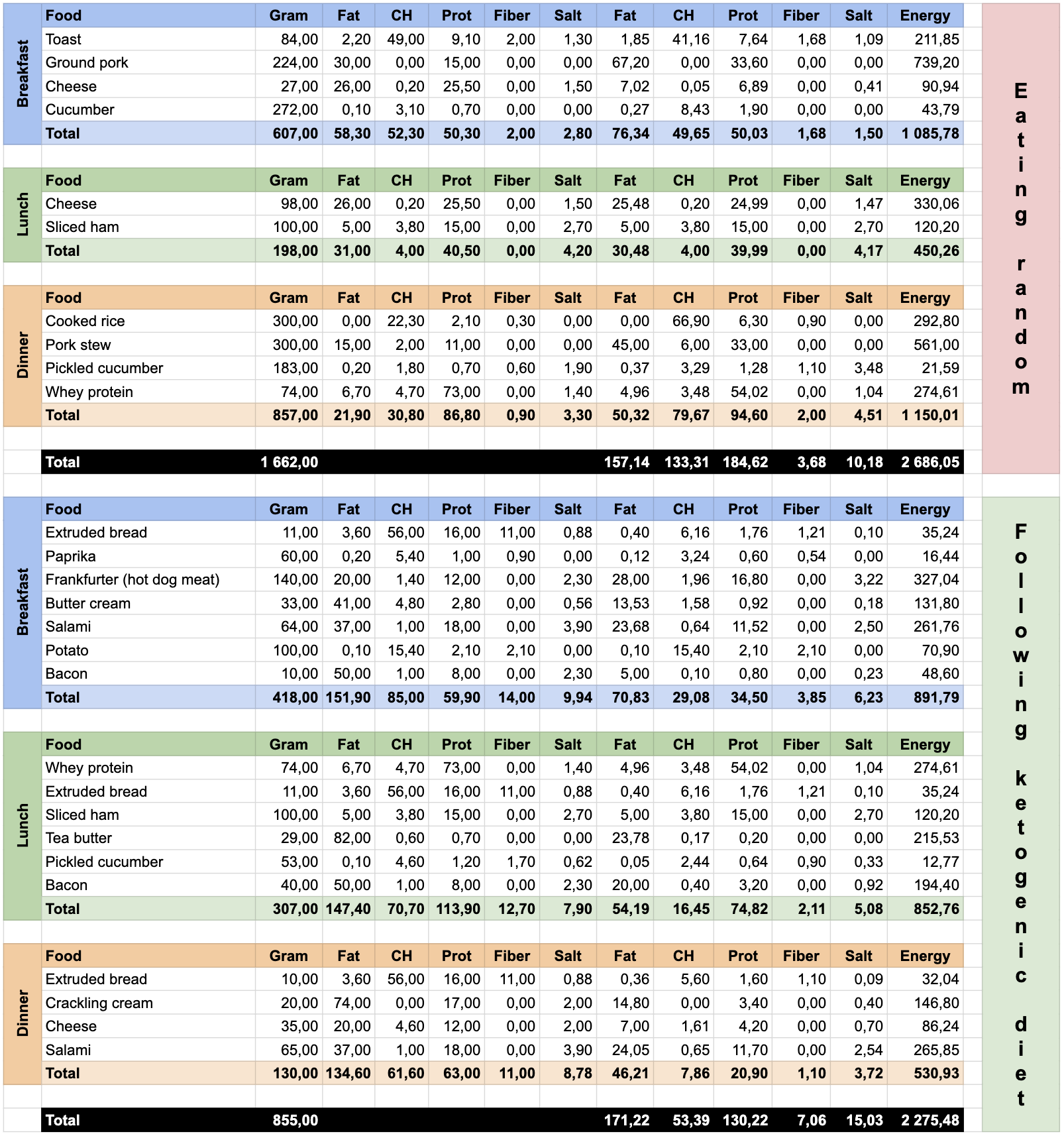Weight loss is 70% diet, 30% workout and everything else, so I also created my Google Sheets document for tracking daily consumption.

I have started this at the end of March 2020, and for the first 2 weeks I was only tracking what I consume without any change (well, I was obviously more self conscious already, so sweets and drinks were already dropped).
Then I changed to the ketogenic diet, because it fits my eating habits, I don't have an issue with eating high fat food, it is as satisfying as carbohydrates (CH) without the addiction of wanting to eat till there is no more, because it's fat, there is a point where your body tells you it's enough. That's something that doesn't work for CH, especially when it's sugar, there's no stopping with that one. 🙂
Good to know: you may be disgusted by the ketogenic diet and that's perfectly fine, people tend to have a preference for one of the 3 main macros and if you try to fight it, your diet will not work. I like fat, so ketogenic diet works for me, if your body is favouring CH or Proteins more, then you need to pick your diet accordingly.
You probably already know which one you prefer, just think about what kind of food you eat?
Fancy bacon and eggs in the morning? Then fat.
Don't have an issue eating chicken breast with salad 3 times a day? Protein.
Can't imagine the previous two? CH is your preference.
About the image: 3 meals a day, food items listed with their volume and properties per 100g, as well as the calculated total for each of these, ending with the Energy, which is in kilo calories (kcal).
The upper part is the first day of tracking, shows I'm fine with high fat and protein, totalling around 2700kcal which was around my BMR with the body weight at the time.
The lower part is my first day with the new diet, subtracted around 400kcal for losing weight (keep in mind I was also working out daily), increased fat, decreased CH. In the long run it turned out that while research says we don't need CH at all, my body do needs 30g at least otherwise I did encounter health issues, while 50g allows a bit more variety to choose from for CH sources. Protein was adjusted to lean body mass kg * 1.5g at the time, later I went for 2-2.5g/kg, because it allowed for better food choices.
Disclaimer: I know the food I ate were not healthy and I did add healthier alternatives for fat sources later like eggs and nuts, but I never really reached a state where I would do avocado for healthy fat or salmon - due to its higher price. There is a lot to learn here, but it's definitely a longer process to get everything right, the first goal is to change to a diet that you can follow, and that needs compromises; keep in mind I was doing this for a year, you only do something that long if you can enjoy it or you have rock solid willpower.
In summary, start to track your intake, use a calculator to get your target calories and macros for weight loss, pick your favourites that fit those numbers and be consistent!
Tracking your progress - Diet